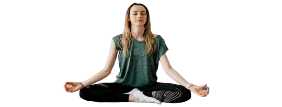Introduction
Chaturanga Dandasana is a simple yoga posture that provides many benefits to the practitioner. It is a modern yoga posture and medieval yoga texts did not mention this posture. However, the pose has been a part of the practice of ancient Danda Exercise in India. Moreover, some versions of Surya Namaskar like Vinyasa Style, incorporate this pose into their sequence.
In this article, we explore the meaning, steps, and benefits of Chaturanga Dandasana in detail.
Chaturanga Dandasana Information
| Pose Name | Chaturanga Dandasana |
| Sanskrit Name | चतुरङ्ग दण्डासन |
| IAST Name | Caturaṅga Daṇḍāsana |
| English Name | Low Plank Pose Four-Limbed Staff Pose |
| Difficulty Level | Moderate |
| Origin | Modern Yoga Pose |
| Type | Hand and Leg Balancing |
Chaturanga Dandasana Meaning
The Sanskrit word चतुर् (catur) means four. अङ्ग (aṅga) means limps. दण्ड (daṇḍa) means staff and आसन āsana means yoga pose. Therefore, Caturaṅga Daṇḍāsana means Four-Limped Staff Pose. In this posture, the whole body weight is on the two palms and the two feet. Moreover, the body is kept like a staff. Hence this name.
Chaturanga Dandasana Procedure
Precautions and Contraindications
Pregnant Ladies and older persons should not practice this posture, since there is a risk of falling. Besides people having conditions like osteoporosis, shoulder issues, and elbow issues should consult their doctor before practice. For other people, there is no restriction.
Preparatory Poses
A basic level of arm balancing is enough to perform this posture. It requires upper body strength. So it requires preparatory poses that improve the upper body strength. Hence, having exposure to the following poses is desirable.
- Adhomukha Svanasana
- Ashtanga Namaskara
- Ashwa Sanchalanasana
- Side Plank
- Lifted Plank
- Bhujangasana
Chaturanga Dandasana Steps
Step 1
Assume Downward Facing Dog Pose. The gap between the arms should be equal to shoulder width. Ensure atleast a 30 cm gap between the big toes.
Step 2
Bend the elbows and lower the body so that the chin, knees, and chest should touch the floor. Exhale while lowering the body. Now the body should be straight.
Step 3
Inhale and lift the chin, knees, and chest. Not part of the body should touch the floor except your palms and toes. You should not hang on your belly. The shoulder blades should not come out. The muscles of the upper arms and stomach should be tightened to keep the back straight. This is the final position. Breath normally.
Step 4
Keep the position as long as it is convenient. To release the pose, exhale and bring the body down to the floor.
Duration
For stand-alone practice, the time duration for this may be one or two minutes. But in a dynamic sequence like Sun Salutation, a couple of seconds is enough.
Follow Up Poses
This pose does not require any counter-pose that should be immediately followed.
Chaturanga Dandasana Benefits
- It increases the upper arm strength.
- The flexibility of the shoulders, elbow, and neck joints.
- Moreover, it tones up the muscles of the neck and stomach.
- It helps to maintain a good posture. Also, it restores the posture anomalies created over a period of time.
- This pose improves spine health and prevents many diseases.
- Regular practice helps to have a flattened stomach.

